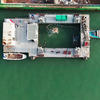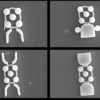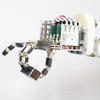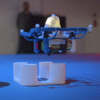You are here
Flipper, a Robot for Collecting Shellfish
07.27.2017, by
Flipper, a shellfish-capturing robot and the latest brainchild of the Laboratoire d’Informatique, de Robotique et de Microélectronique de Montpellier (LIRMM), has just been tested in the waters off Mayotte, a hotspot of biodiversity.
This project was funded as part of the CNRS Call for Expression of Interest (AMI) entitled X-life - Little Understood Branches of the Living World.
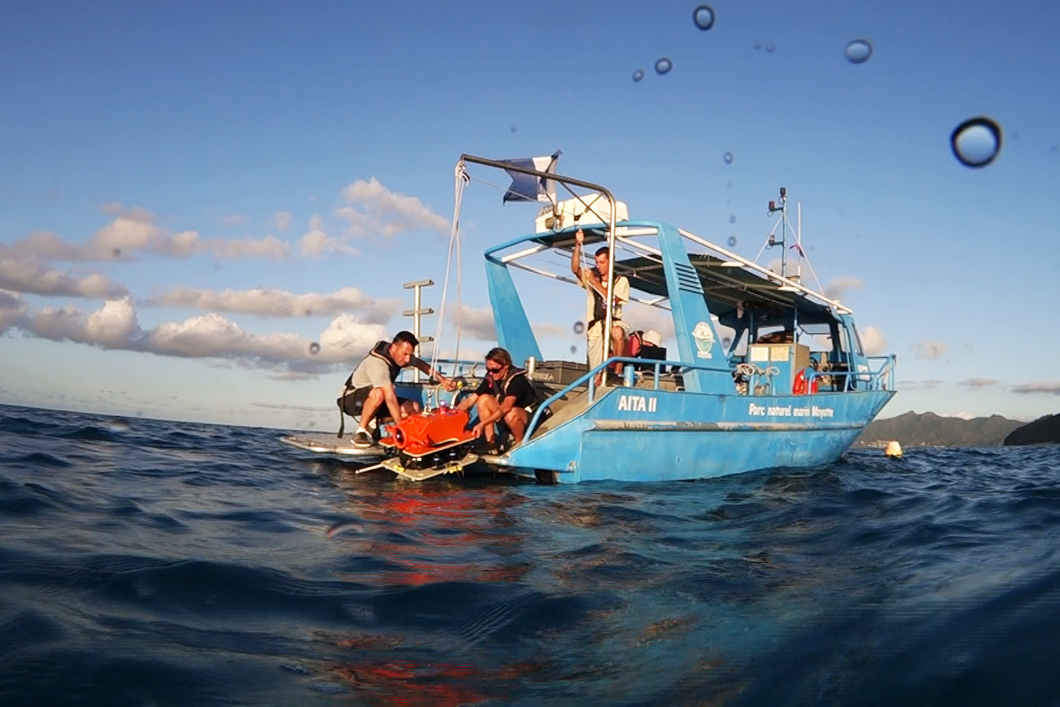
1
Slideshow mode
In June 2017, Vincent Creuze of the LIRMM and the project coordinator, Sébastien Dutertre of the l'Institut des Biomolécules Max-Mousseron (IBMM), journeyed to Mayotte to test Flipper, a prototype shellfish-capturing robot able to collect samples from marine sand with extreme precision and at great depths.
Bruno GAREL/ Agence française pour la biodiversité, CNRS, Université de Montpellier
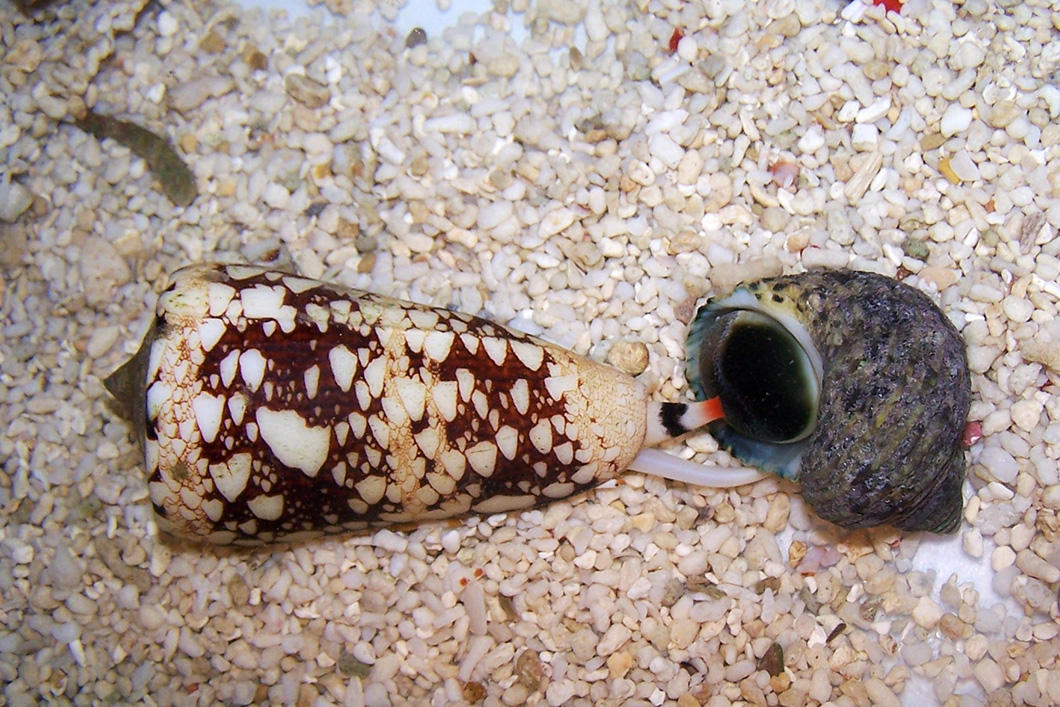
2
Slideshow mode
These scientists are seeking rare species of Conidae or the cone snail family, which produce a complex venom with highly promising pharmacological properties. A drug already marketed under the trade name Prialt (ziconotide), for example, is an analgesic even more potent than morphine. It is extracted from the venom of the magician cone (Conus magus). There are over 800 known cone snails in the world, some 70 of which are found in the coastal waters off Mayotte.
Sébastien DUTERTRE
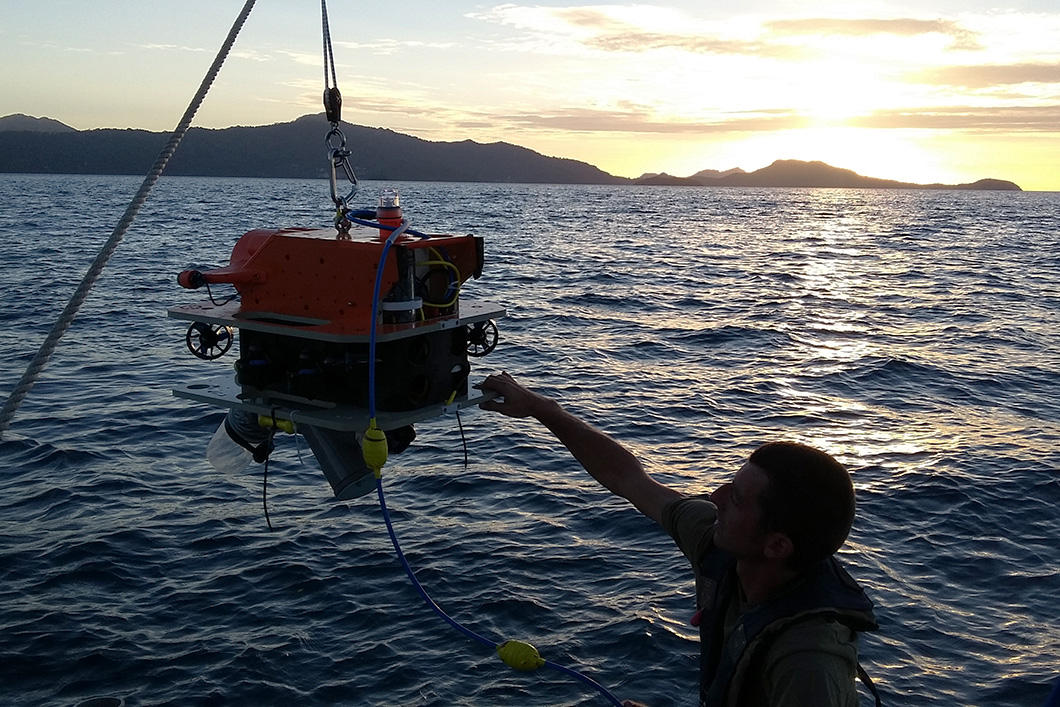
3
Slideshow mode
Flipper is an underwater robot weighing 30 kg (65x50x45 cm) fitted with several HD video cameras and a suction pump to draw in shellfish and separate them from the sand around them. It was developed by the LIRMM, a laboratory that specializes in computer-assisted control, which is particularly difficult underwater due to the small size of the robot (small robots are inherently less stable than their larger counterparts) and to the tether required by all non-autonomous underwater robots to transmit power, commands and real-time images.
Bruno GAREL/ Agence française pour la biodiversité, CNRS, Université de Montpellier
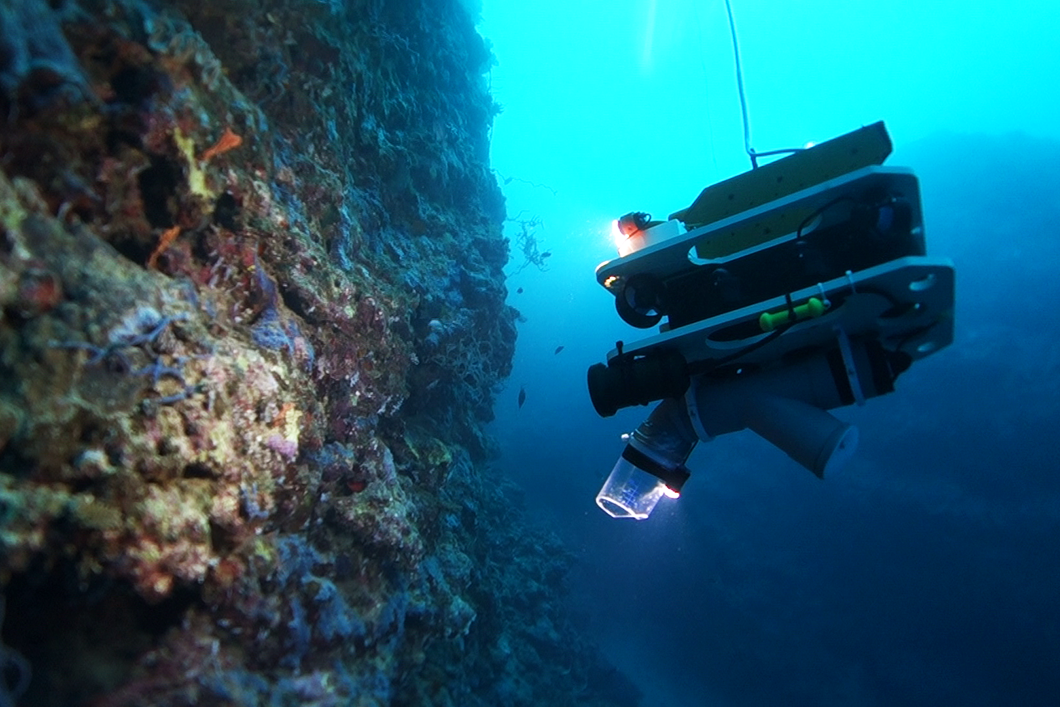
4
Slideshow mode
Flipper has several advantages over human divers: it can work for several hours at a stretch and can dive to depths of over 50 m (the current legal diving limit for research).
Bruno GAREL/ Agence française pour la biodiversité, CNRS, Université de Montpellier
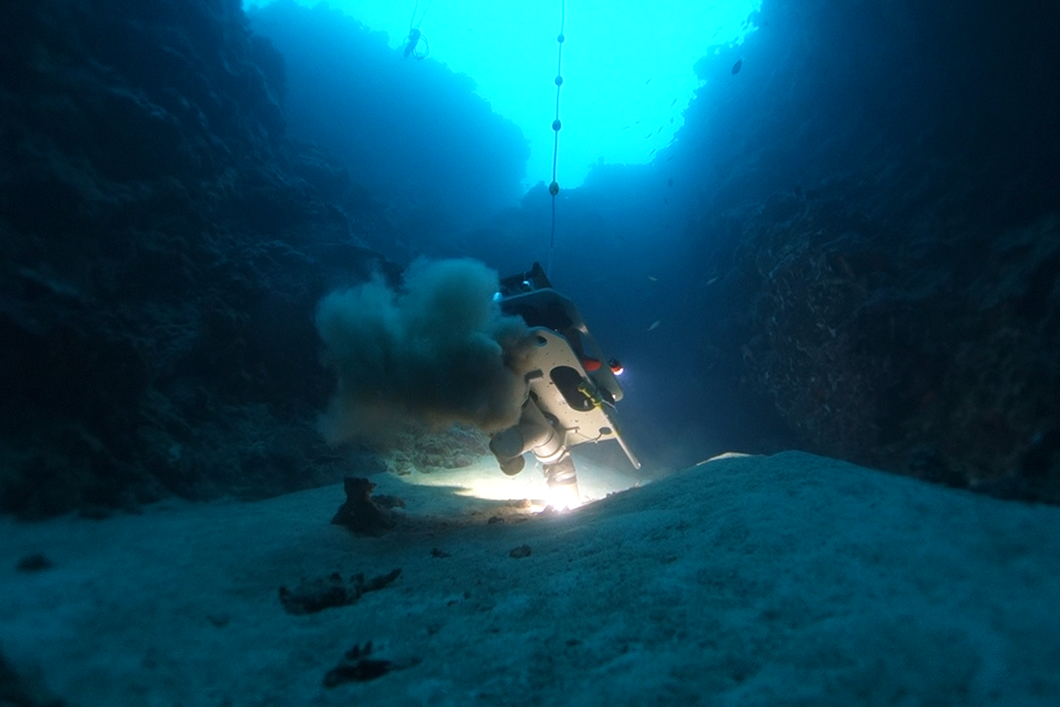
5
Slideshow mode
Unlike seabed dredging systems, Flipper allows navigation over complex terrains such as rocky areas and coral reefs, and can remove samples limited strictly to the species actually being sought, which is a vital consideration in preserving these fragile habitats.
Bruno GAREL/ Agence française pour la biodiversité, CNRS, Université de Montpellier

6
Slideshow mode
The suction pump with which Flipper is equipped, which draws in water and sand, has a grill that holds the shellfish before dropping them into a tank pending transportation to the surface (once 3 or 4 shellfish have been collected).
Bruno GAREL/ Agence française pour la biodiversité, CNRS, Université de Montpellier
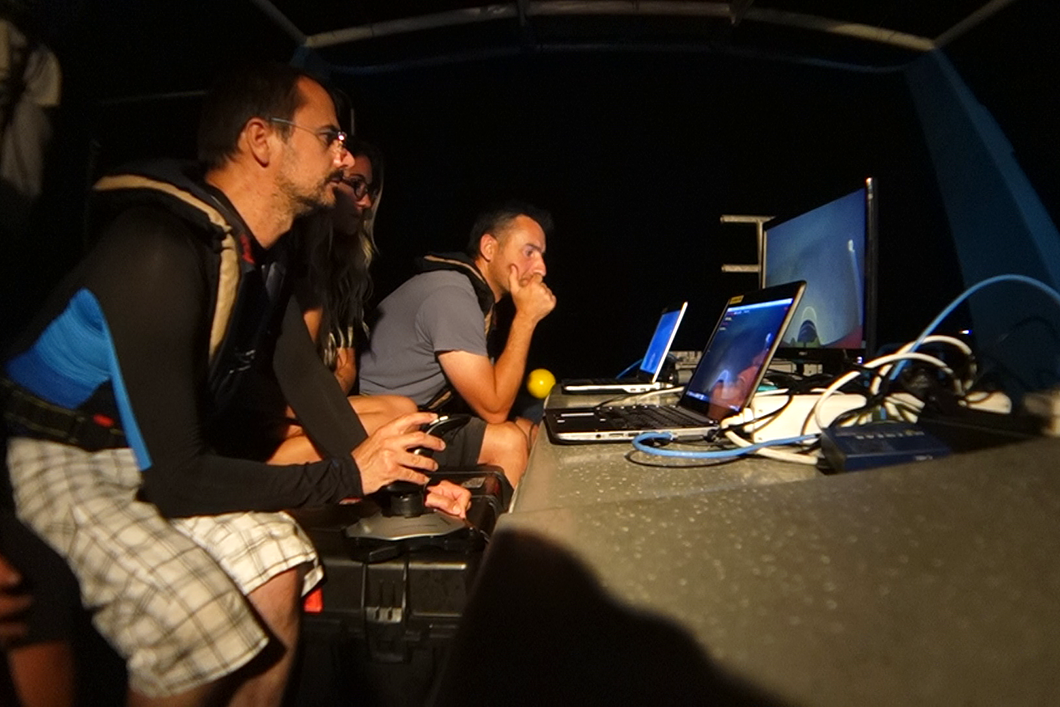
7
Slideshow mode
On board the vessel, the researchers use the real-time images to identify the cone snails, which is usually a fairly delicate task. In some cases, it is necessary to navigate for several tens of minutes before any shellfish are found. Flipper spends between four and five hours per day immersed in water.
Bruno GAREL/ Agence française pour la biodiversité, CNRS, Université de Montpellier
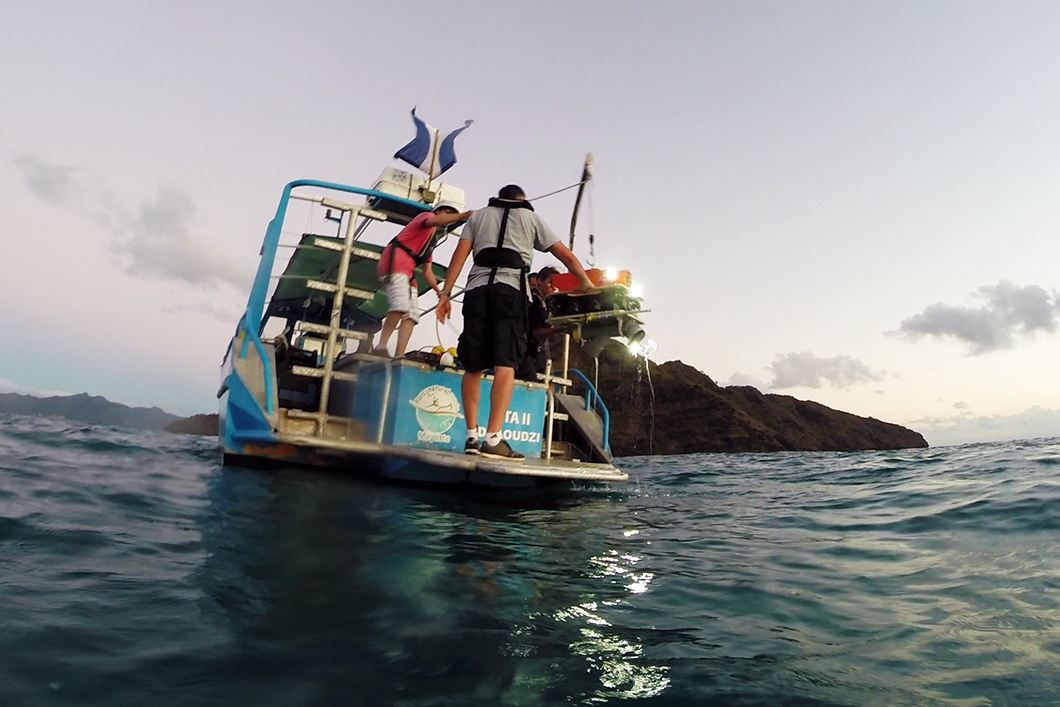
8
Slideshow mode
However, the days are far longer for the researchers, who must determine the best spots to locate these shellfish, a task that has been greatly facilitated by the expert knowledge of the divers of the Mayotte Marine Nature Park (Indian Ocean), which has provided support for the project by making a boat and team available.
Bruno GAREL/ Agence française pour la biodiversité, CNRS, Université de Montpellier
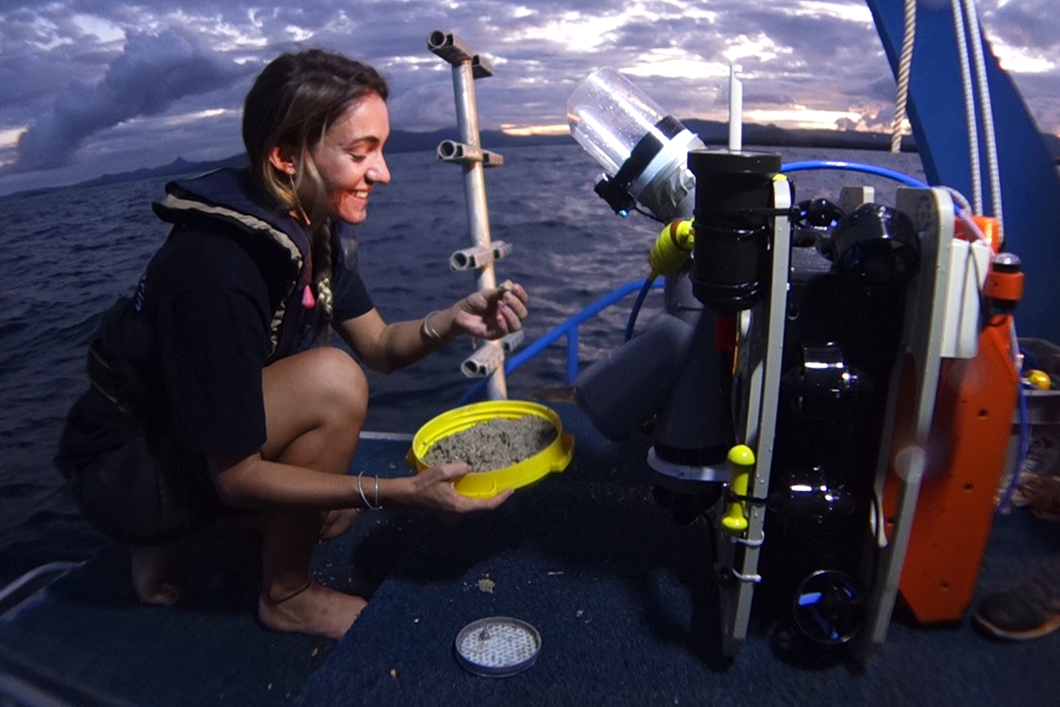
9
Slideshow mode
Over a period of 10 days, a hundred specimens were found, representing some 30 species.
Bruno GAREL/ Agence française pour la biodiversité, CNRS, Université de Montpellier
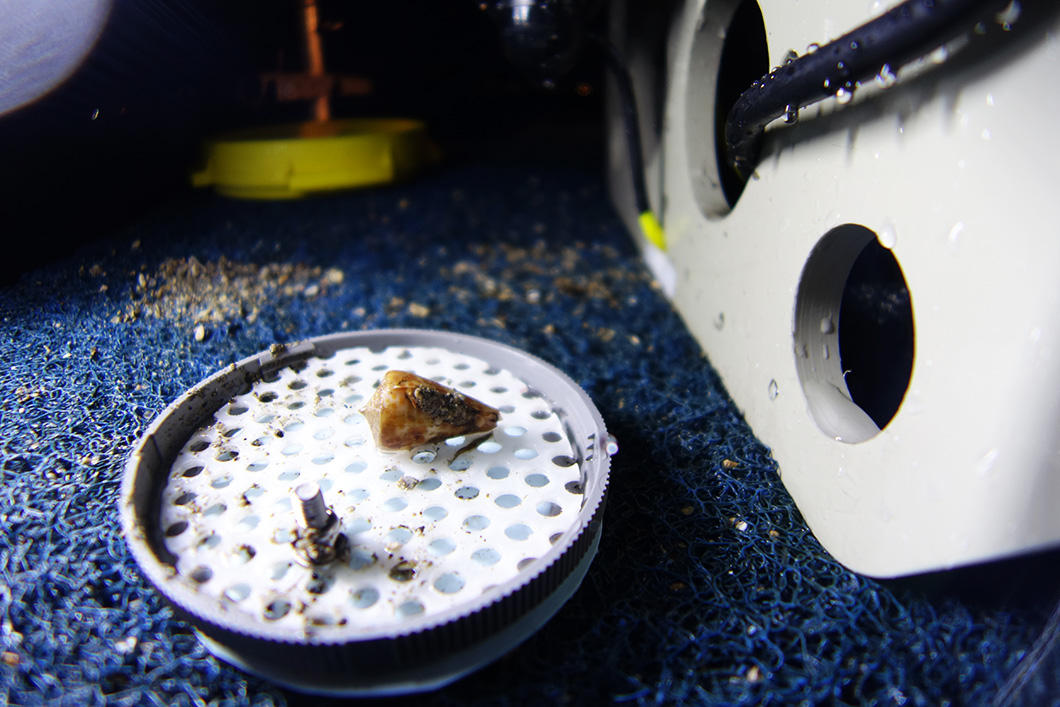
10
Slideshow mode
Following collection, the animals are either kept alive or dissected. Using a new technology known as transcriptomics, biologists from the IBMM are able to extract genetic information in a single run enabling them to obtain all sequences of all toxins produced by a given species.
Bruno GAREL/ Agence française pour la biodiversité, CNRS, Université de Montpellier
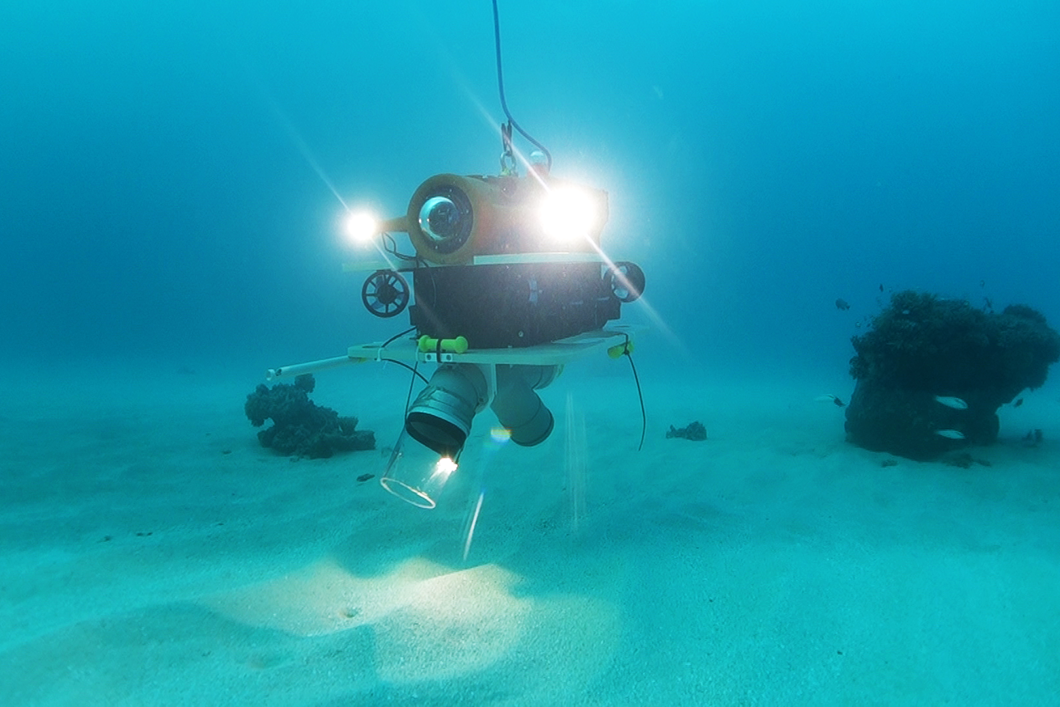
11
Slideshow mode
Flipper may be deployed in a major mission of France’s National Museum of Natural History scheduled for 2018 in New Caledonia to explore the seabed at depths of up to 100 meters. It could perhaps help identify new species.
Bruno GAREL/ Agence française pour la biodiversité, CNRS, Université de Montpellier
Explore more
Life
Article
11/26/2025
Article
11/24/2025
Article
09/24/2025
Article
09/01/2025
Article
08/07/2025
Robotics
Article
01/23/2023
Article
10/20/2022
Article
08/11/2022
Article
07/22/2020
Video
12/20/2019
Robot
Article
04/16/2025
Article
04/14/2025
Article
08/11/2022
Article
03/31/2022
Article
12/08/2020







